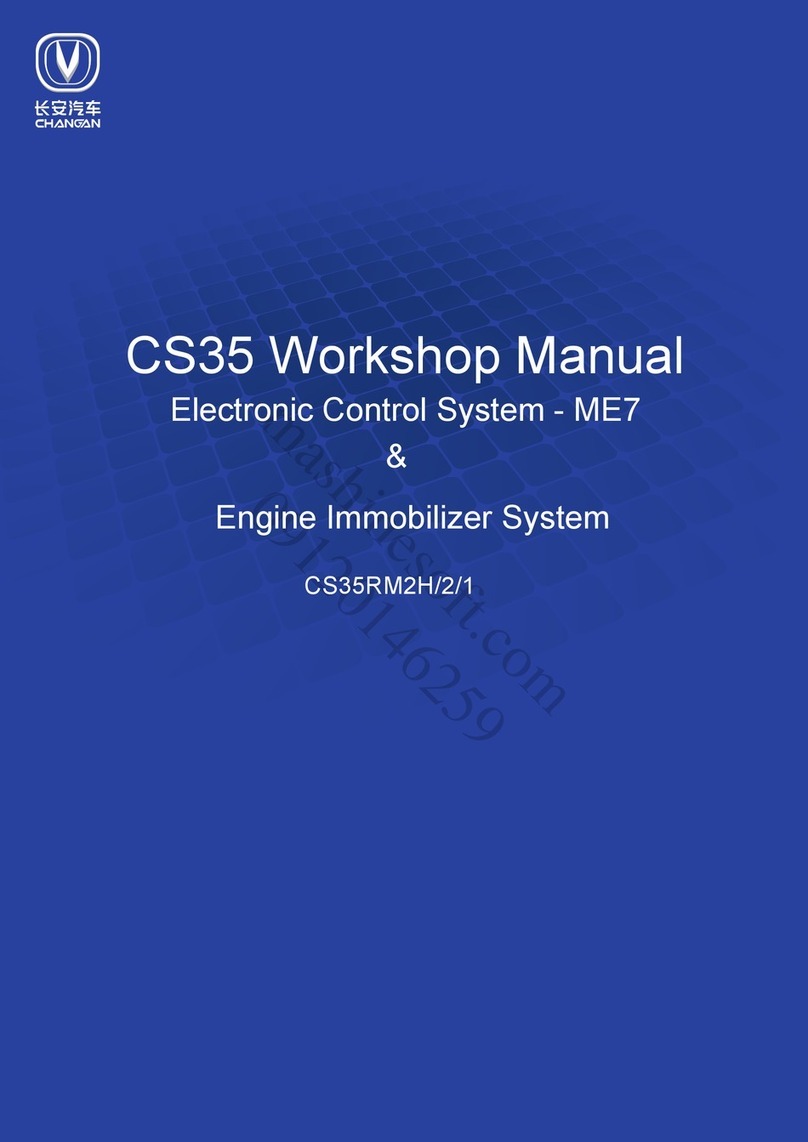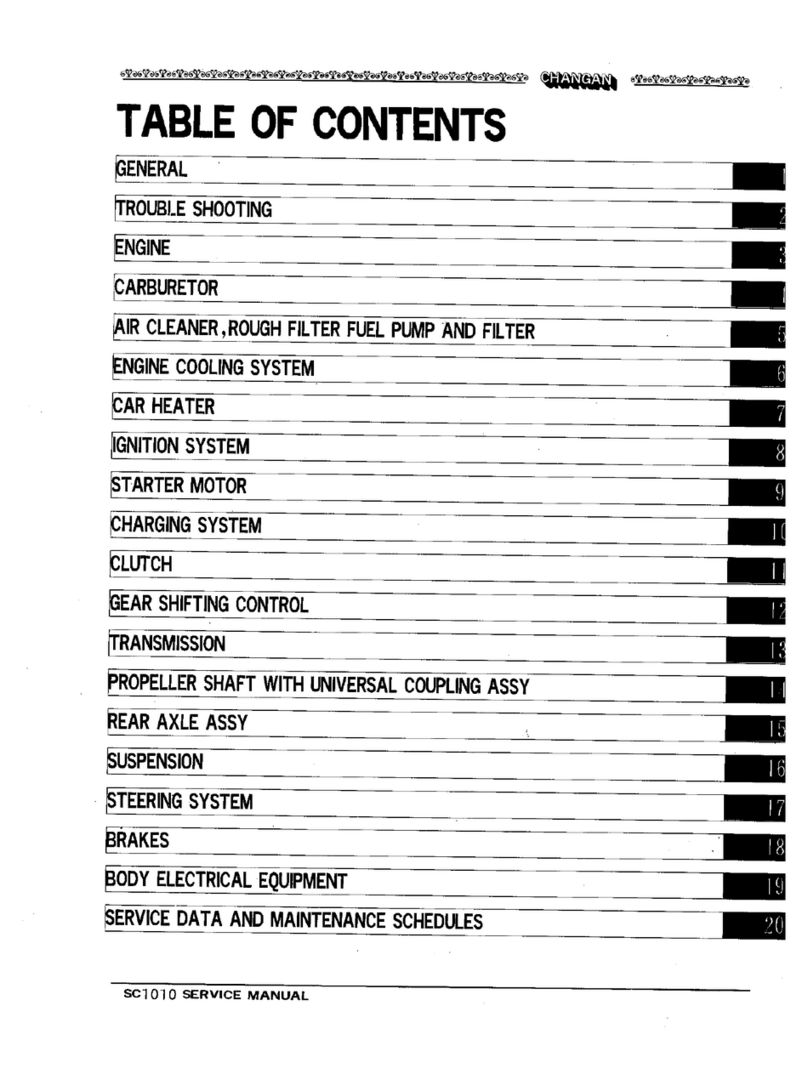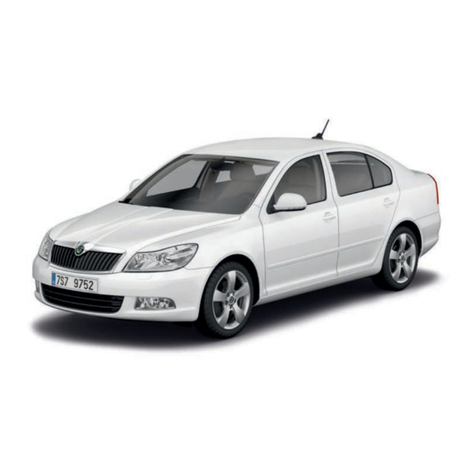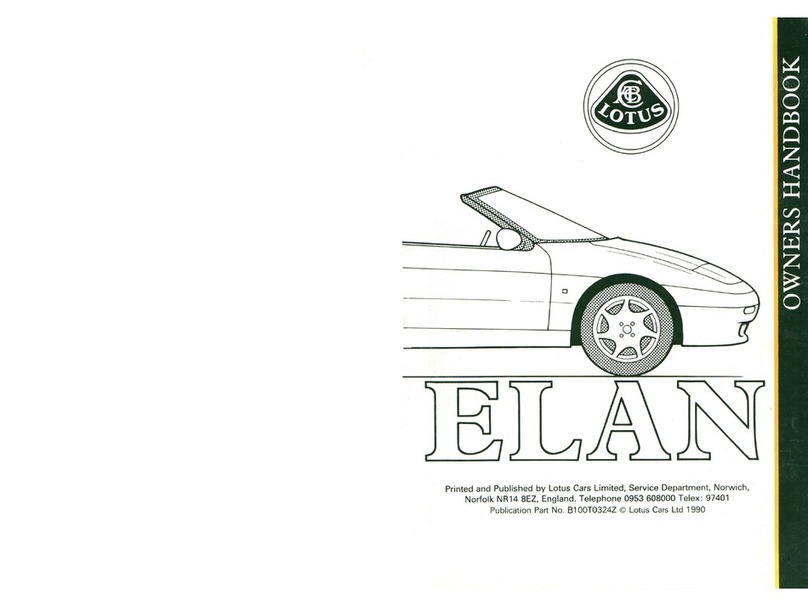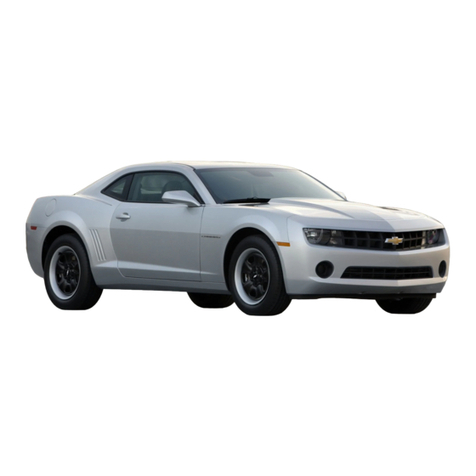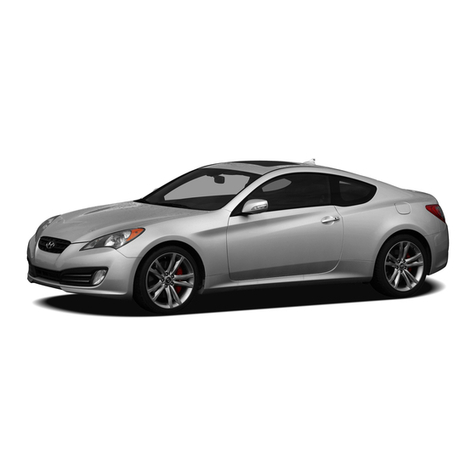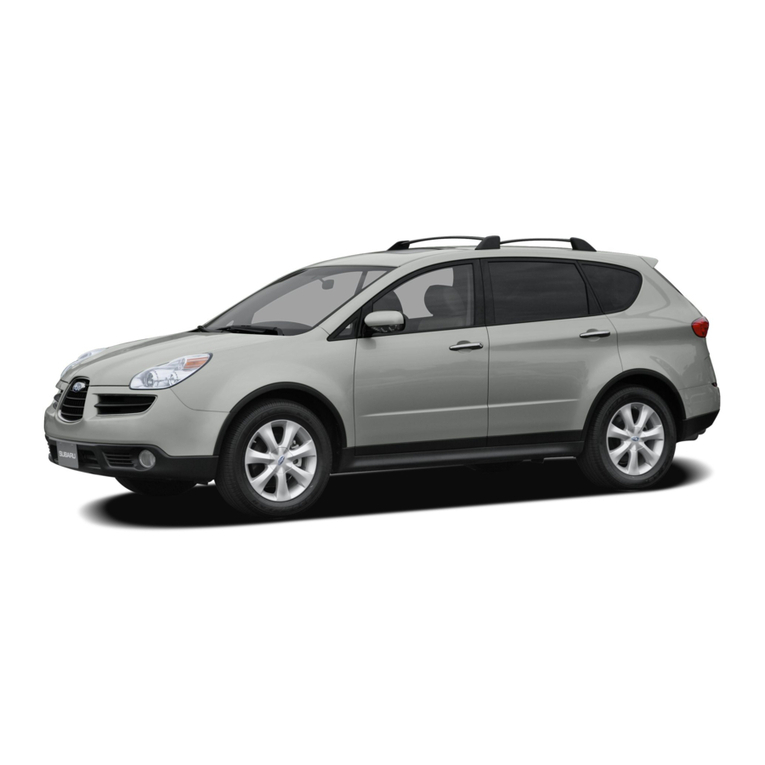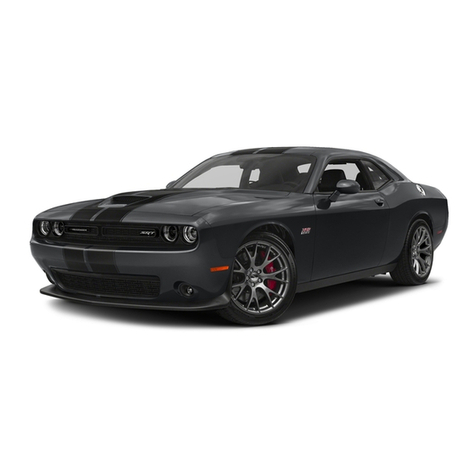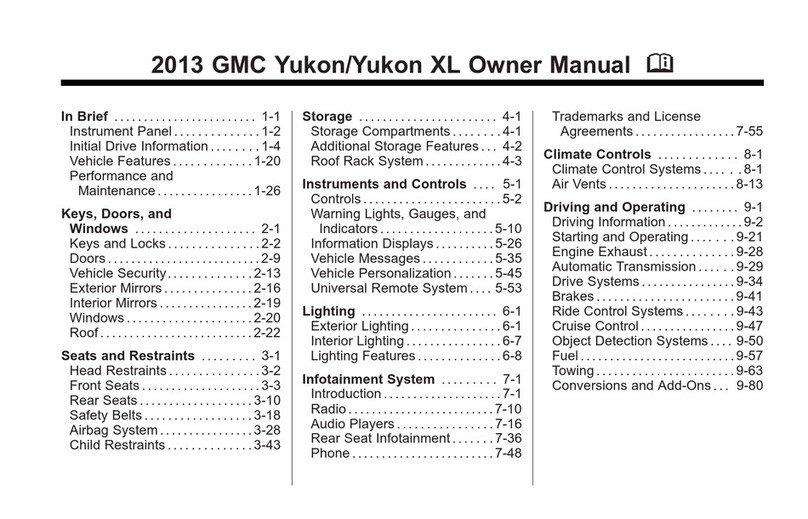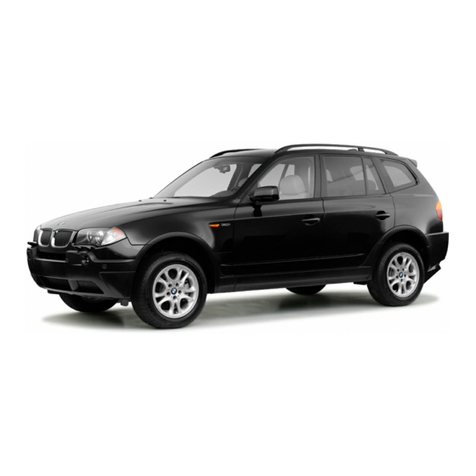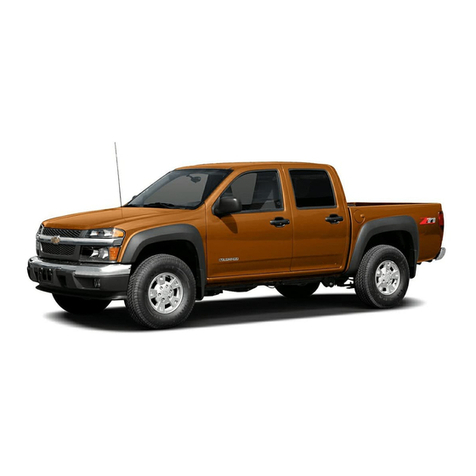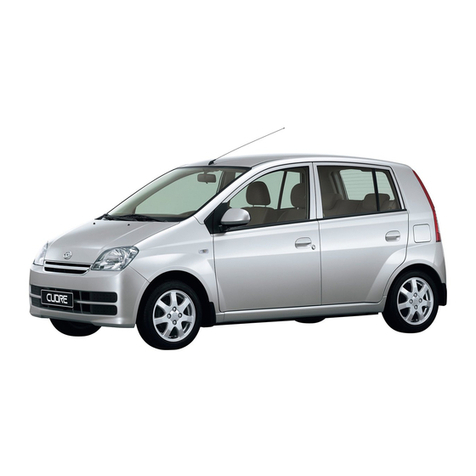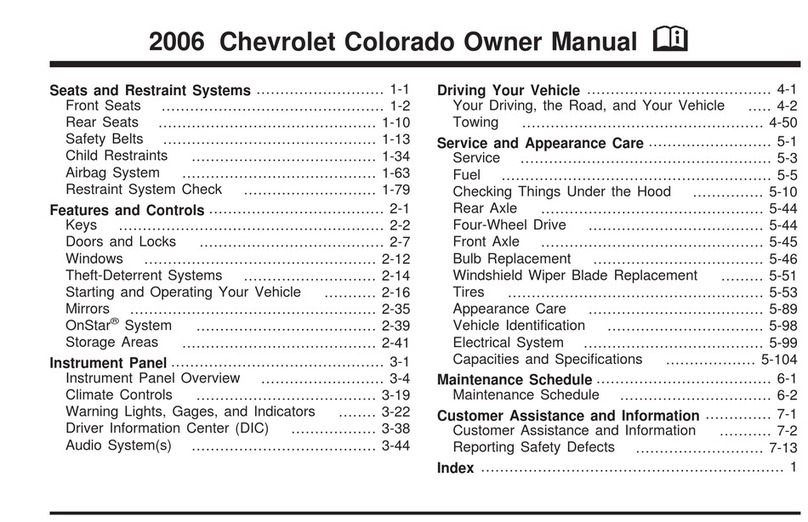Changan M201 2014 Quick start guide



M201 2014.01
Table of Contents
1.1.1 Introduction........................................................................................................... 1.1.1-1
1.1.2 Symbol................................................................................................................... 1.1.2-1
1.1.3 Circuit Fault Diagnosis ........................................................................................ 1.1.3-1
Diagnostic Procedure ......................................................................................................... 1.1.3-1
Diagnostic Tools.................................................................................................................. 1.1.3-1
Fault Testing ....................................................................................................................... 1.1.3-2
Repair Tools........................................................................................................................ 1.1.3-4
Wiring Harness Terminal Repair ......................................................................................... 1.1.3-6
3.1.4 Cooling System .................................................................................................... 3.1.4-1
3.1.7 Fuel System .......................................................................................................... 3.1.7-1
3.1.8 Ignition System..................................................................................................... 3.1.8-1
3.1.9 Starting System .................................................................................................... 3.1.9-1
3.1.10 Charging System ................................................................................................ 3.1.10-1
3.1.12 Electronic Control System................................................................................. 3.1.12-1
Power Supply and Data Line .............................................................................................. 3.1.12-2
HO2S/EVAP........................................................................................................................ 3.1.12-3
TPS/KS/IAC ........................................................................................................................ 3.1.12-5
CKP/Evaporator Thermistor/ECT/IAT ................................................................................. 3.1.12-7
4.1.1 Heating, Ventilation and Air Conditioning.......................................................... 4.1.1-1
Compressor and Sensor Control Operation ....................................................................... 4.1.1-2
Power Supply/Sensor/Actuator........................................................................................... 4.1.1-4
4.2.2 Instrument Cluster................................................................................................ 4.2.2-1
Power Supply and Signal.................................................................................................... 4.2.2-2
Signal Lamp........................................................................................................................ 4.2.2-4
Lighting Signal Lamp .......................................................................................................... 4.2.2-6
4.2.3 Horn ....................................................................................................................... 4.2.3-1
4.2.4 Cigarette Lighter................................................................................................... 4.2.4-1
4.2.5 Information and Entertainment System.............................................................. 4.2.5-1
Power Supply...................................................................................................................... 4.2.5-2
Speaker............................................................................................................................... 4.2.5-3

M201 2014.01
Table of Contents
4.2.6 Lighting System ....................................................................................................4.2.6-1
Headlamp............................................................................................................................ 4.2.6-2
Brake Lamp......................................................................................................................... 4.2.6-5
Turn Lamp........................................................................................................................... 4.2.6-7
Position Lamp and License Plate Lamp.............................................................................. 4.2.6-11
Fog Lamp............................................................................................................................ 4.2.6-13
Backup Lamp ...................................................................................................................... 4.2.6-15
Interior Lamp....................................................................................................................... 4.2.6-17
4.2.7 Wiper ......................................................................................................................4.2.7-1
Front Wiper ......................................................................................................................... 4.2.7-1
4.2.8 Central Door Lock .................................................................................................4.2.8-1
4.2.9 Power Window.......................................................................................................4.2.9-1
4.2.10 Body Control System..........................................................................................4.2.10-1
4.2.11 On-board Network System .................................................................................4.2.11-1
DLC (Data Link Connector)................................................................................................. 4.2.11-1
6.1.1 Fuses and Relays..................................................................................................6.1.1-1
Main Fuse Box .................................................................................................................... 6.1.1-1
I/P Fuse Box ....................................................................................................................... 6.1.1-2
6.1.2 Power Supply Distribution ...................................................................................6.1.2-1
I/P Power Supply Distribution 1...........................................................................................6.1.2-1
I/P Power Supply Distribution 2...........................................................................................6.1.2-2
I/P Power Supply Distribution 3...........................................................................................6.1.2-3
6.1.3 Fuse Details ...........................................................................................................6.1.3-1
6.1.4 Grounding Distribution.........................................................................................6.1.4-1
6.1.5 Wiring Harness Connector Location View..........................................................6.1.5-1
6.1.6 Grounding Location View.....................................................................................6.1.6-1
6.1.7 Wiring Harness Connector Terminal View ..........................................................6.1.7-1
6.1.8 Abbreviation ..........................................................................................................6.1.8-1

M201 2014.01
1.1.1-1 1.1.1-1Introduction
M1101001
I/P Fuse Box P40
2
7
1
Main Fuse Box P01
Fuel System
1.25 BU/WH1.25 BU/WH
3X07
0.5 WH/BN
0.5 WH/YE
0.5 WH/GN
0.5 WH/BK
1.0 RD/BU
1.0 RD/BU
1.0 RD/BU
1.0 RD/BU
1.25 RD/BU1.25 RD/BU
2E09
1E09
2E06
1E06
2E04
1E04
2E02
1E02
8.0 WH 8.0 WH
8.0 WH
2
IF15
15A
29
30
1
EF01
80A
67
65
68
69
IR05
ECM
0.5 BN/WH0.5 BN/WH
32 E18
15 X05
0.5 YE/RD0.5 YE/RD
60 E18
25 X05
1.25 BU/WH
16 X04
IF19
15A
37
38
82
80
83
84
IR08
2.0 RD/BU
2.0 BK 1.25 BK1.25 BK
G201
4
2
S01
S01
Fuel
Pump
Fuel
Injector 1
Fuel
Injector 2
Fuel
Injector 3
Fuel
Injector 4
2.0 RD/BU
M
50 E18 63 E18 49 E18 64 E18
Refer to 3.1.12
Electronic Control
System
1X05
4 X07
13
10
3
4
9
+B
12
11
6
5
8
1
.
1
.
1
I
n
t
ro
d
uc
ti
on

1.1.1-2
M201 2014.01
1.1.1-2Introduction
1. System name.
2. Wiring harness connector numbering.
In this manual, the wiring harness connector
is numbered based on wiring harness. For
example, connector of ECM wiring harness in
engine wiring harnesses is numbered as E01.
E is the wiring harness code, 01 is the
connector serial number.
The following table lists are wiring harness
codes:
Note: Door wiring harness consists of
wiring harness of two front doors and
back door.
Note:For wiring harness connector
numbering details, please refer to wiring
harness layout views.
3. Component name.
4. System information related to the circuit.
5.
Wiring harness to wiring harness connector,
the black arrow represents positive pole and
the box represents the negative pole. The
character in the box is the connector code.
6. Wiring harness color and width. The following
table shows the color code.
If a wiring harness has two colors, the first
character shows the background color and the
second shows the stripe color, divided by “/”.
For example, YE/WH means yellow background
color with white stripe.
7. Pin number. The pin number of mated
connector pair are mirrored relationship, as
shown below:
8. Grounding number. The grounding number
starts with G. For grounding details, please
refer to grounding layout views.
Code Wiring Harness Name
EN Engine wiring harness
E-- Engine wiring harness connector
I/P I/P wiring harness
P-- I/P wiring harness connector
SO Chassis wiring harness
S-- Chassis wiring harness connector
DR Door wiring harness
D-- Door wiring harness connector
RF Roof Wiring Harness
L-- Roof Wiring Harness connector
X--
Wiring harness to wiring harness connector
Color Code Wiring Harness
Color Legend
BK Black
BN Brown
BU Blue
GN Green
GY Grey
LG Light Green
LU Light Blue
OG Orange
PK Pink
RD Red
SR Silver
VT Purple
WH White
YE Yellow
123
456
123
456
M1101002

M201 2014.01
1.1.1-3 1.1.1-3Introduction
9.
Power supply type supplied to fuse. +B
represents battery power supply. ACC
represents power supply when ignition switch
is at “ACC”. IG1 represents terminal 2 output
when ignition switch is at “ON”. IG2
represents terminal 5 output when ignition
switch is at “ON”.
Note: The difference between IG1 and
IG2 is that there is power supply output
from IG1, but no from IG2 when the
ignition switch is at “ST”.
10. Wiring harness splice point
11. Fuse number consists of a fuse code and a
sequential number. Code EF represents
fuses in the main fuse and relay box; Code IF
represents fuses in instrument panel fuse and
relay box. For details, please refer to fuse
table.
12. A relay is represented by two capital English
letters. Code ER represents relays in the
main fuse and relay box; Code IR represents
relays in the instrument panel fuse and relay
box. For details, please refer to the relay
table.
13. Filling grey shade means the electronic
component, P01 represents the wiring
harness connector code.
14. Circuit differences in different models,
engines or specifications are noted by
dashed lines and texts beside the circuit.
15. The 8-shaped symbol between wiring
harnesses represents ‘Unshielded Twisted
Pair’ (UTP), which is used for sensor signal or
data communication.
16. If a system wiring diagram requires more than one
page, it starts with and ends with . If more than
one circuit extends to the next page, use B, C and other
letters to represent respectively.
Not Spliced Cross Circuit
Spliced Cross Circuit
M1101003
0.5 BK/WH
0.85 BK/WH
ECM(1.0L)
ECM(1.3L)
17 S01
13 S01a
M1101004
0.5 BU
0.5 VT
M1101005
A1
A1
0.5 RD/YE
A1
0.5 RD/YE
A1
M1101006


M201 2014.01
1.1.2-1 1.1.2-1Symbol
Grounding
Tem p er at u re
Sensor
Solenoid
Solenoid
Light Load
Fuse
Moderate Load
Fuse
Heavy Load
Fuse
Heater
Normal Close
Relay
Normal Open
Relay
Double Throw
Relay
Resistor
Potentiometer
Rheostat
Ignition Coil
Battery
Capacitor
Cigarette Lighter
Antenna
Normal Open
Switch
Normal Close
Switch
Double Throw
Switch
Knock Sensor
G7
M1102001
1
.
1
.
2
S
ym
b
o
l

1.1.2-2
M201 2014.01
1.1.2-2Symbol
UTP
(Unshielded
Twisted Pair)
Starting Motor
Oxygen Sensor
Stopper Switch
Diode
Photodiode
Light Emitting
Diode
Motor
Not Spliced
Cross Circuit
Bulb
Horn
Clock Spring
Airbag
Spliced Cross
Circuit
M
M
M
M1102002

M201 2014.01
1.1.3-1 1.1.3-1Circuit Fault Diagnosis
Diagnostic Procedure
Refer to the following procedure for the circuit
fault diagnosis:
1. Confirm Fault
To do the proper repair, confirm the fault
symptoms described by the customer firstly.
Inspect the relevant component carefully to
confirm the fault symptoms and make record.
DO NOT disassemble the component before
confirmation of the fault scope and causes.
2. Read Wiring Diagram and Analyze Causes
Make a complete analysis and judgement on
the fault components from power supply to
grounding according to the sub-system wiring
diagram and determine the repair solution. If
it cannot be determined, please read the
system description in the “Description and
Operation” section in the repair manual to
understand the working principle. And inspect
other circuits that has common part with the
fault circuit, for example, the fuse, grounding,
switch, etc. Inspect the circuit not covered in
step 1. If other components in the common
circuit work properly, it means the fault exists
in its own circuit. Otherwise, the fuse or
grounding may have faults.
3. Inspect Circuits and Components
Always use the wiring diagram together with
repair manual and refer to the diagnostic
procedure for the relevant circuits or
components in the repair manual. For the
circuit with a control module, fully use
diagnostic tools to do the test. Effective
diagnosis should be a logical and reasonable
operation. Fully use the diagnostic
procedures in the repair manual and start the
inspection from the causes with most
possibility and the components with easiest
inspection way.
4. Repair Fault
Repair the fault. Refer to the wiring diagram
and the description for fault treatment in
repair manual. For example, the diagnostic
procedure for poor grounding and the wiring
harness connector treatment.
5. Confirm Circuit Working Condition
After repair, all functions should be reinspected
to confirm the fault repaired. For the fuse blown
fault, Inspect all the relevant circuits using this
fuse.
Diagnostic Tools
1. Voltmeter and Test Lamp
Use test lamp or voltmeter to inspect the
circuit status. Test lamp comprises a pair of
wiring harnesses and a 12 V bulb. When
inspecting, connect one wiring harness to the
ground and the other one to the certain
measurement point. If the bulb is lit, it means
the measurement point has power supply.
Warning: DO NOT use test lamp to inspect
the control module voltage. Otherwise it
could damage the interior circuit inside
the control module. Please use a voltmeter
with 10 MΩ or higher internal resistance
(for example, to test the ECM voltage).
Voltmeter has the same connection method
as the test lamp, but voltmeter can display the
voltage value of the circuit. Use a voltmeter
with high resistance to test the voltage. If the
circuit has poor connection, the voltmeter
may show the normal value, but the voltage
cannot drive the load successfully.
M1103001
1
.
1
.
3
Ci
rcu
it
F
au
lt
Diagnosis

1.1.3-2
M201 2014.01
1.1.3-2Circuit Fault Diagnosis
2. Self-powered Test Lamp and Ohmmeter
Use test lamp with own 12 V power supply or
ohmmeter to inspect the circuit for continuity.
Tes t l amp c omp ri s es a b ulb , b at t ery a nd a pai r
of wiring harnesses. The bulb will be lit when
the two wiring harnesses are connected.
Before testing, disconnect the negative
battery cable and pull out the fuse of the
circuit. To test the circuit for continuity,
connect two wiring harnesses to the two
measurement points. If the bulb is lit, it means
the circuit is normal.
Warning: DO NOT use self-powered test
lamp to inspect the control module.
Otherwise, it could damage the interior
circuit inside the control module. Please
use a ohmmeter with 10 MΩ or higher
internal resistance.
Ohmmeter has the same usage method as
voltmeter, but ohmmeter can show the
resistance value. The lower resistance, the
better continuity.
3. Jumper Wire with Fuse
Use jumper wire to test a broken point for
open loop circuit (circuit open). The jumper
wire is a tool that should be in tandem with
the circuit.
Warning: To protect the circuit to be
inspected, DO NOT use the fuse higher
than the rated capacity of circuit to
inspect relevant circuits. DO NOT use the
jumper wire as the input or output signal
when a control module such as ECM or
TCM is in the circuit. Otherwise it could
damage the circuit interior inside the
control module.
Fault Testing
1. Voltage Testing
Voltage testing is to test the voltage at a
certain point. When testing a certain
connector terminal, insert the positive probe
into the wiring harness from the connector
back without assembling wiring harness
connector.
M1103002
5A
M1103003
Test Lamp
Solenoid
Switch
5A
+B
0.5RD
I/P Fuse and
Relay Box
Voltmeter
0.5G
2E00
1E00
1C00
M1103004

M201 2014.01
1.1.3-3 1.1.3-3Circuit Fault Diagnosis
1 When testing the voltage with test lamp
or voltmeter, connect the negative of
testing tools to battery negative.
2 Connect the other wiring harness of the
test lamp or the positive probe of the
voltmeter to the test position.
3 If a voltmeter is used and voltage display
lower 1 V above compared to the rated
value, it means a circuit fault. It means a
circuit fault if a test lamp is used and lamp
is not lit.
2. Power Testing
1 Disconnect the negative battery cable.
2 Connect one wiring harness of the self-
powered test lamp or the probe of the
ohmmeter to the test component. If using
ohmmeter, please connect the two
probes each other and use reset button
to adjust the ohmmeter to zero.
3 Connect the other wiring harness of the
test lamp or probe of the ohmmeter to the
other side of the test load.
4 If the bulb is lit, it means the circuit is
normal. If an ohmmeter is used and the
resistance value is very low or close to 0
Ω, it means the component has good
continuity.
3. Short Circuit Testing
1 Disconnect negative battery cable.
2 Connect one wiring harness of the self-
powered test lamp or one probe of the
ohmmeter to the output terminal of the
fuse.
3 Connect the other wiring harness of the
test lamp or other probe of the ohmmeter
to the grounding.
4 Disconnect all the electrical loads to the
fuse.
CAUTION: If not disconnecting all the
electrical loads to the fuse, when testing
the low resistance circuit like lights, the
ohmmeter will always display the low
value. This will cause wrong judgement.
5 Do the careful inspection from the place
closest to the fuse.
6If the bulb is lit or ohmmeter has value
display less than 5 Ω, it means the short
circuit to the ground.
Switch
M1103005
Test Lamp
Solenoid
Switch
I/P Fuse and
Relay Box
Voltmeter
5A
+B
0.5RD0.5G
2 E00
1E00
1C00
M1103006

1.1.3-4
M201 2014.01
1.1.3-4Circuit Fault Diagnosis
4. Voltage Drop Testing
This is a test to inspect the voltage drop along
the wiring harness, connector or switch.
1 Connect the positive probe of the
voltmeter to one end of the circuit close to
the battery (connector or switch side).
2 Connect the negative probe to the other
end of the circuit (the other side of
connector or switch).
3 Switch on or off to make the circuit work.
4 The voltmeter will display the voltage
difference between the two test points.
5 If the voltage difference is more than 0.1
V (less than 50 mV for 5 V voltage
circuit), it means a circuit fault. Inspect for
loose, oxidized or corrosive circuit.
Repair Tools
1. 5 KΩ Rheostat
It can simulate each ohm-type sensor signal,
like coolant temperature sensor, air intake
temperature sensor and the like. And help
make quick judgement on the performance of
the component.
Switch
Solenoid
Voltmeter
5A
+B
0.5RD
I/P Fuse and
Relay Box
0.5G
2 E00
1E00
1C00
M1103007
M1103008
M1103009

M201 2014.01
1.1.3-5 1.1.3-5Circuit Fault Diagnosis
2. LED Test Lamp
Bidirectional two-color LED lamp can change
its color when exchanging the positive and
negative. This feature can be used to test the
PWM control signals of Hall sensor.
3. Airbag Test Tool
Before installing a new airbag after airbag
system has faults or vehicle accident, install
this tool to the airbag system, and use
diagnostic tools to confirm the airbag system
work properly. After that, install the new
airbag. This process can guarantee a safe
airbag operation.
4. Probe
When testing a system component, insert this
tool into the connector from the back and it is
unnecessary to break the wiring harness to
reduce man-made fault.
5. Terminal Repair Tool
When maintaining and repairing certain
terminal, use this tool to separate them from
the connector.
M1103010
M1103011
M1103012
M1103013

1.1.3-6
M201 2014.01
1.1.3-6Circuit Fault Diagnosis
Wiring Harness Terminal Repair
1. Remove the terminal pin.
2. Separate the clip with wiring harness terminal
repair tool.
3. Pull out the wiring harness terminal from the
rear of connector.
M1103014
Wiring Harness
Terminal Clip
Wiring Harness Terminal
Repair Tool
M1103015
M1103016

M201 2014.01
1.1.3-7 1.1.3-7Circuit Fault Diagnosis
4. Adjust and clean the wiring harness terminal
contact plate pulled out from connector.
M1103017

1.1.3-8
M201 2014.01
1.1.3-8Circuit Fault Diagnosis
Poor Grounding Connection Repair Procedure
1. Remove the grounding bolt.
2. Clean the two surfaces (both bolt side and
vehicle contact side) of the copper ring with
abrasive cloth until the oxide completely
cleared.
3. Clean the grounding surface on the vehicle
with abrasive cloth until it is completely
cleaned.
M1103018
M1103019
M1103020

M201 2014.01
1.1.3-9 1.1.3-9Circuit Fault Diagnosis
4. Reinstall the wiring harness and retaining bolt
of grounding. Tighten to specified torque.
Torque for M6 bolt: 8 Nm
Torque for M8 bolt: 20 Nm
M1103021

3.1.4-1
M201 2014.01
3.1.4-1Cooling System
Cooling System
I/P Fuse Box P40Main Fuse Box P01
8.0 WH 8.0 WH
8.0 WH
+B
2
IF15
15A
29
30
1
EF01
80A
67
65
68
69
IR05
ECM
0.5 BN/WH0.5 BN/WH
32 E18
15 X05
2.0 RD/BU
2.0 BK 2.0 BK
G103
0.5 BK/RD0.5 BK/RD
2.0 RD/BK
60 64
23 X05
62
1
2
P13
P13
2.0 BU/WH
0.5 RD/BU
IF04
20A
7
8
IR04
62 63
Condenser
Fan
Radiator
Fan
2.0 BK 2.0 BK
G105
0.5 BK/WH
2.0 BU/RD
0.5 BK/WH
2.0 RD/BU
0.5 RD/BU
IF03
30A
5
6
IR03
58
57
55 59
19 X05 1
2
P10
P10
M M
52 E18 E18
M3104001
3
.
1
.
4
C
oo
li
ng
S
ys
t
em
Table of contents
Other Changan Automobile manuals
